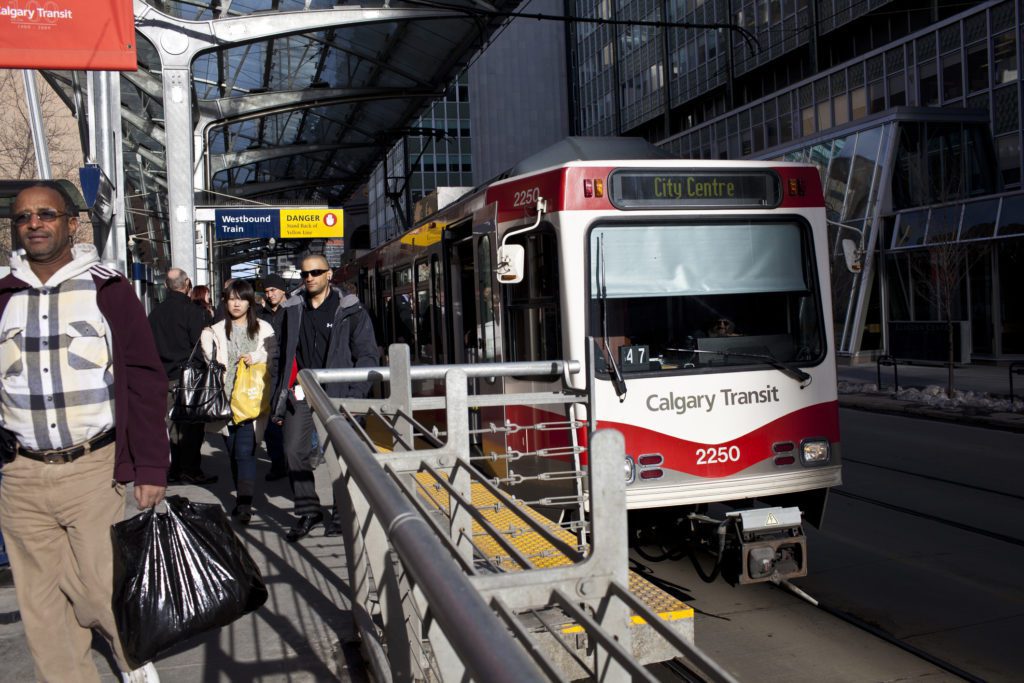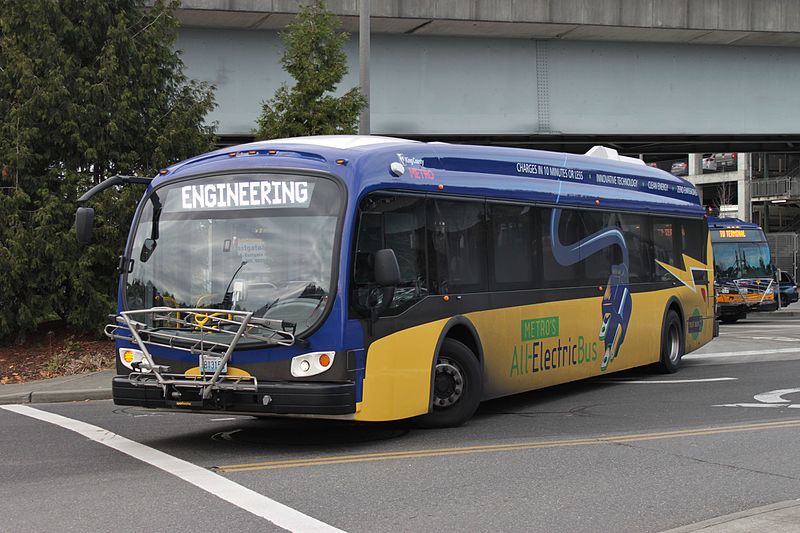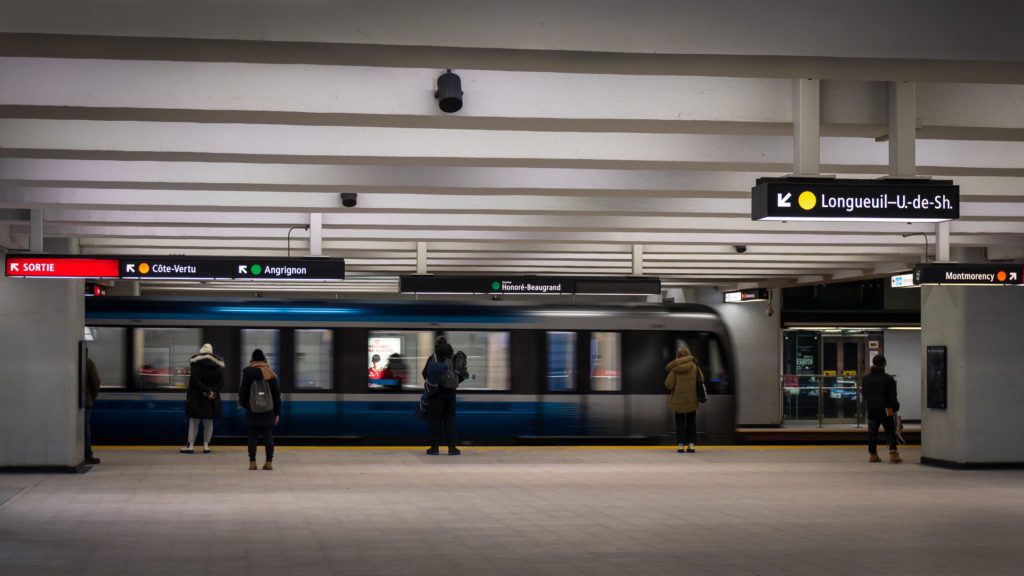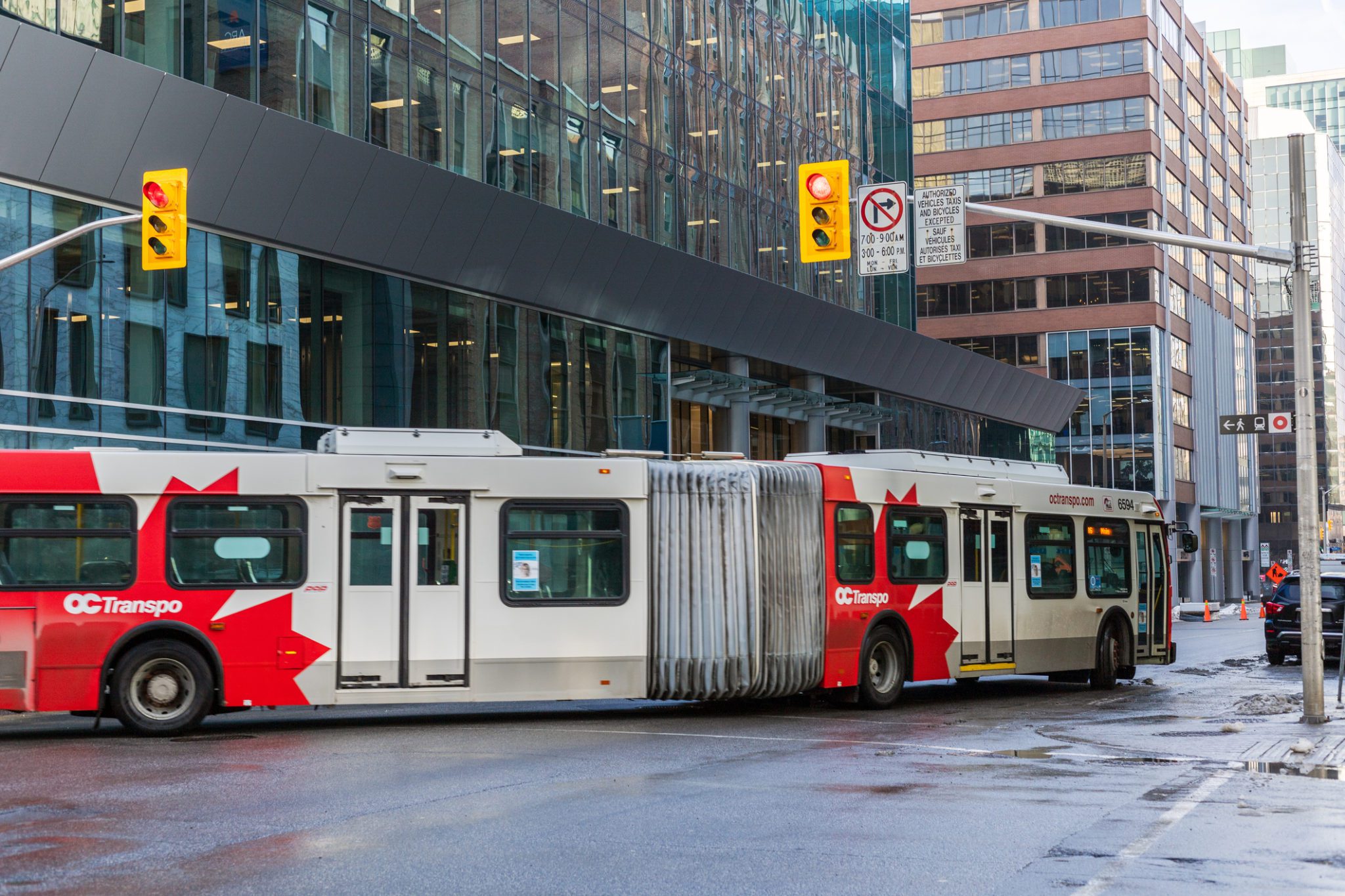Did you know that Canada’s federal government doesn’t fund public transit service?
The federal government only contributes funding to construct new infrastructure like light rail or subway projects and for the purchase of vehicles like buses. This is called capital funding. Funding for day-to-day service, like hiring new bus drivers to drive those new buses – is called operations funding.
Funding just one but not the other is a problem, because without both we won’t be able to expand public transit at the scale and pace necessary to meet our climate goals.
Take Action: Tell the federal government to fund public transit systems!
Here are five reasons why federal operations funding for public transit is important:
1. We need to close the 8 million tonne greenhouse gas reduction gap
Public transit is critical to meeting Canada’s greenhouse gas reduction targets in the government’s 2030 Emissions Reduction Plan. The most recent numbers indicate an emissions reduction gap of 8 million tonnes in 2030, even with all currently announced policies – like the Clean Car Standard – in place. That’s because Canada’s plan to require car companies to shift towards selling only electric vehicles by 2035 only affects new car sales – not the polluting cars that are already on the road and that will be sold up to 2035. So while that helps to solve transport emissions in the long-term, we still have a big problem in the near-term too from polluting cars. Because cars that are bought typically stay on the road for 15 years or more – there is a big delay between new cars becoming electric and all cars becoming electric.
That means we need to double down on proven ways of reducing transport emissions now including shifting more car trips towards public transit, as well as walking and cycling. Also, if fewer people need to buy cars because they can easily get around using public transit, it makes the path towards making all cars electric a lot easier.


2. Increase public transit ridership and get the most value out of capital funding
But how do we do that? All the studies show that the most important factor when it comes to increasing transit ridership is more public transit service. That’s because more transit service means your bus comes more frequently, it is faster and more reliable, and therefore more competitive with the car in terms of convenience. This reflects the phenomenon of ‘induced demand’. Just as widening roads induces more traffic, making public transit a more attractive choice means more people use it.
This also works in reverse: if public transit service is cut, it drives riders away. That is why it is so important to protect transit service from cuts and instead expand service, and right now the way to do that is with more funding for public transit operations.
But you can’t expand service simply by buying more buses. It also takes a driver to put that bus into service, and that takes operations funding. With operations funding, bus transit service can scale up quickly at the pace we need to meet our 2030 climate targets.
Currently, there are nearly 2000 buses across Canada’s entire urban transit system fleet that aren’t being used, because transit systems can get money for a bus but not for the driver and the rest of the people needed to run the system. Because of how hard the pandemic has hit transit system operating budgets due to lower ridership and farebox revenues, this problem has hit crisis levels where deep service cutbacks are a real threat, or in some cases already happening. Knowing how important increasing service is to building ridership, it makes no sense to create a funding situation where we aren’t running our transit fleets at full service capacity and paving the way for deep cuts to service.


3. Help public transit systems adapt to new travel patterns and provide more equitable service
As working from home becomes entrenched, public transit systems need federal assistance to help them adapt to the new world of work. Just because someone is working from home for most of the week doesn’t mean they don’t need public transit for other kinds of trips like visiting loved ones, going shopping, or accessing social services.
A brighter future for public transit means replacing lost commute trips by growing transit’s ability to serve and draw-in the full spectrum of non-work related trips that are currently made by car. That takes more service, not less – because non-work trips are typically made in times and places where the least amount of public transit service is provided: during off-peak times, and from everywhere-to-everywhere, rather than suburbs-to-downtown.
Adapting to these new travel patterns also means delivering more equitable service. Did you know that commuting trips actually comprise less than half of all trips? One study of the city of Montreal found that the second largest trip type was ‘care travel’ – and disproportionately done by women, doing things like running errands to support their household. In fact, running more transit service all-day and everywhere would be enormously beneficial to women’s travel patterns, as well as low-income, disproportionately racialized shift workers who don’t commute during the 9-5 peak.


4. Greater regional and social equity
A federal role in funding transit operations would also help resolve the massive regional disparities in terms of access to viable transit service in different parts of Canada. Did you know that Quebec offers more than three times the amount of transit service per person than neighbouring New Brunswick does? As a result, this better service has led to Quebec having a nearly nine times higher rate of public transit utilization than New Brunswick, per person.
Moreover, funding only capital is great for building new light rail and subway projects in big cities, but it doesn’t do much to help expand local bus service, especially in regions without big cities. Bus service is the only transit mode that six out of ten provinces have, and the vast majority of Canadian public transit riders use the most. 67 per cent of all boardings on a transit vehicle in Canada occurs on a bus. The main constraint to improving bus service in most of the country is operations funding, not capital funding.
With more funding for public transit operations, transit systems would also become less reliant on fare-revenues, both improving resiliency but also giving cities more flexibility to make fares more affordable with either broad-based fare reductions or targeted fare reduction programs for those with low incomes to reduce barriers to sustainable mobility. It would also allow public transit service expansion to happen without hiking fares – which evidence has shown is counter-productive to growing ridership and works to cancel out other incentives like the price on carbon.


5. Other countries do it much better than us
Most other cities across the world with successful public transit systems all have healthy budgets to fund transit operations. This is usually because the city has powers to levy income or sales taxes, or they have a higher regional or national level of government levy similar taxes for them and then transfer that money to the city.
In France, for example, a significant share of public transit operating costs are paid for through a payroll tax on employers. In Canada, most cities and transit systems don’t have the ability to levy these kinds of taxes, nor do they have sufficient support from provincial or federal governments to pay for the expansion of transit service.
In fact, municipalities in Canada manage 60 per cent of the country’s infrastructure but only collect 10 per cent of all tax revenues. They are reliant on property taxes and user fees, which is why transit fares have consistently been rising faster than inflation. Some cities, like Metro Vancouver’s TransLink have helped fill this gap with a regional gasoline tax, but that funding tool is now being eroded by the transition to electric vehicles. This is also the case in Quebec and Ontario, who provide very limited support from transferring cities gasoline tax revenues. Cities across Canada are now calling for a national conversation on a new fiscal framework – and the essential role that public transit service provides to reach our climate goals must be at the heart of that conversation.
Many cities have bold climate plans with big targets to reduce emissions from transportation – but they are entirely unfunded. To tackle the climate crisis, we need all levels of government, municipal, provincial and federal to step up, and that must mean a permanent role for the federal government in public transit operations. Now that federal-provincial-municipal infrastructure funding agreements are up for renewal, this is a crucial opportunity for the federal government to play a leadership role, and set the agenda towards a sustainable future.
Take Action: Tell the federal government to fund public transit systems!








